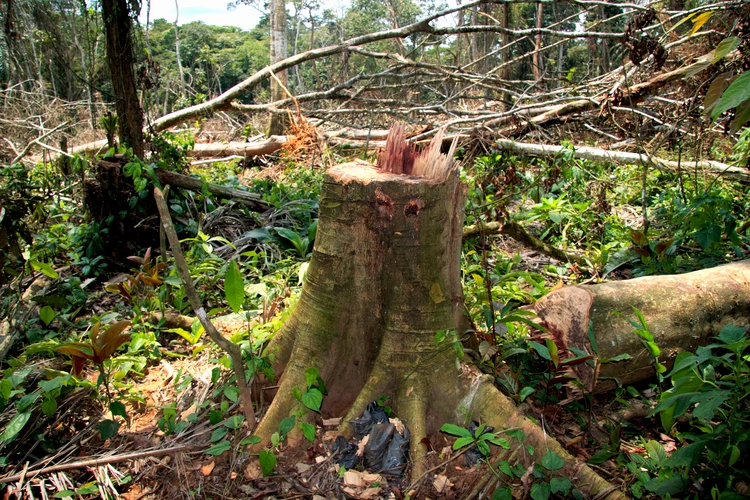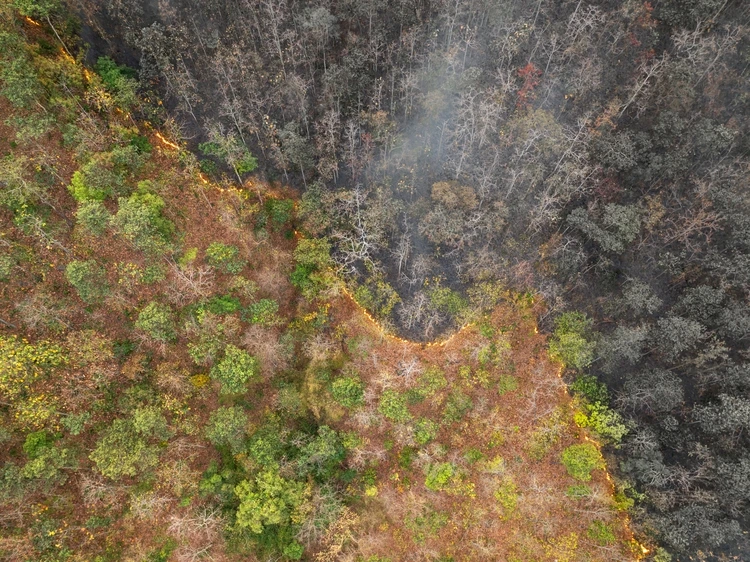
In the Congo Basin and in overlooked dry tropical forests, losses are soaring – and could soon become irreversible

By
Globally – with a couple of surprising and encouraging exceptions – the picture of rainforest loss remains bleak. The positive news is that, according to the World Resources Institute (WRI), Indonesia (11 per cent decrease) and Malaysia (13 per cent decrease) both experienced less primary forest loss than in 2023. Both nations now report rates of loss well below those recorded a decade ago.
Enjoying this article? Check out our related reads on deforestation…
First-hand experience of deforestation-related catastrophe appears to have been a key driver of recent change in Indonesia. The devastating peat fires of 2015, which caused respiratory distress in millions of people, triggered a political and social shift towards forest protection and restoration, and fire suppression.
The Indonesian government imposed a moratorium on new palm oil concessions, set up a Peatland Restoration Agency and instigated far tighter fire prevention policies. ‘Combined with market pressure on major palm oil firms, those steps cut primary forest loss by more than half compared to the mid- 2010s,’ says Chris Butler, a climate policy analyst at the Climate Observatory.

In Malaysia, government efforts to cap plantation areas and strengthen forest laws ‘are now working alongside corporate commitments to reduce deforestation,’ according to the WRI. Context remains critical, however: Malaysia has lost nearly a fifth of its primary forest since 2001 and nearly a third since the 1970s.
By contrast, the loss of the Congo Basin’s expansive tropical primary forests continued in 2024. According to the WRI, the Democratic Republic of the Congo (DRC) and the Republic of the Congo both recorded their highest-ever losses. The challenge, says Joe Eisen, executive director of Rainforest Foundation UK, is that ‘deforestation drivers vary considerably from country to country, and even within countries – underlining the need for more nuanced analyses and policy prescriptions.’
Many studies, he adds, fail to account for indirect drivers such as road building, which can open previously inaccessible areas of forest to extensive exploitation and logging – a process Eisen describes as ‘the cascade of deforestation.’
In the DRC, which forms the core of the Congo Basin, record losses were driven by agriculture, charcoal production, mining and illegal logging for the timber trade. On the basin’s periphery, the main culprits were palm oil, coffee and rubber plantations.
In the Republic of the Congo, primary forest loss increased by 150 per cent from 2023 to 2024 – almost double the amount recorded in any previous year. Fires accounted for 45 per cent of the destruction, a result of drier- and hotter-than-usual conditions. Elsewhere, however, the WRI reports that Gabon, Equatorial Guinea and the Central African Republic managed to keep forest loss broadly stable.

Concerns over global forest loss extend beyond rainforests. Dry tropical forests – which stretch across Latin America, Africa, Asia and the Pacific – account for nearly half of all tropical and subtropical forests worldwide. These include Madagascar’s spiny thickets and India’s monsoonal woodlands. In some regions, as little as five per cent of original dry forest remains. ‘Unless dry forests receive the same attention as the Amazon or Borneo, they may vanish largely unnoticed, taking with them species, cultures and ecosystem services that cannot be replaced,’ Eisen warns




